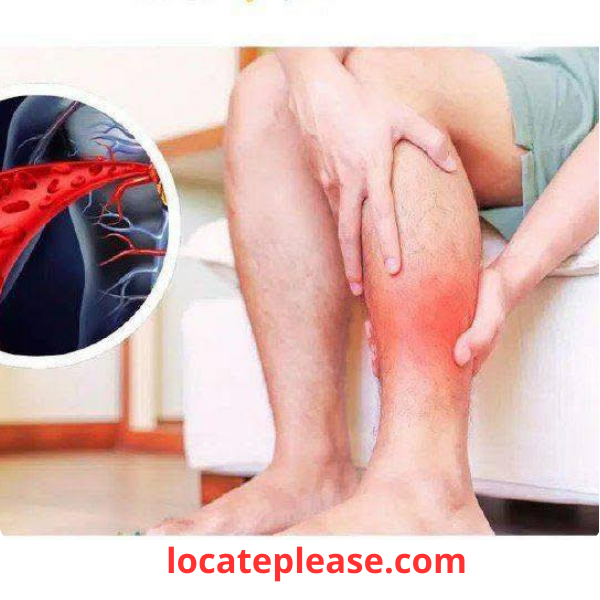After 50, your body begins to change in ways you can’t always feel — but your legs might tell the story.
Do your feet feel colder than before?
Do your legs feel heavy, tired, or achy by the end of the day?
Do you get cramps at night or notice swelling?
These aren’t just signs of aging.
👉 They could be early warnings of poor blood circulation — a silent but serious condition that affects millions of adults over 50.
Ignoring circulation issues can lead to varicose veins, deep vein thrombosis, peripheral artery disease (PAD), and even heart attack or stroke.
But there’s hope — and it comes in the form of a powerful, often overlooked vitamin:
👉 Niacin (Vitamin B3).
Once known mainly for its role in energy and metabolism, niacin is now gaining attention for its remarkable ability to support blood vessel health, improve circulation, and keep your legs strong and pain-free.
Let’s dive into the science — and discover how this essential nutrient could transform your health after 50.
💡 What Is Niacin (Vitamin B3)?
Niacin, also known as vitamin B3, is a water-soluble vitamin essential for:
- Converting food into energy
- Supporting nervous system function
- Repairing DNA
- Maintaining healthy skin and digestion
But its most underappreciated superpower?
👉 Boosting cardiovascular and circulatory health.
Niacin plays a crucial role in:
- Dilating blood vessels (improving blood flow)
- Reducing inflammation in arteries
- Enhancing endothelial function (the inner lining of blood vessels)
- Improving cholesterol levels
And that’s why it’s becoming a game-changer for people over 50.
❤️ How Niacin Supports Circulation and Leg Health
As we age, our blood vessels lose flexibility, circulation slows, and plaque can build up in arteries — especially in the legs.
This can lead to peripheral artery disease (PAD) — a condition where narrowed arteries reduce blood flow to the limbs.
Symptoms include:
- Leg pain when walking (claudication)
- Cold feet
- Slow-healing sores
- Muscle cramps at night
Niacin helps fight these issues in several powerful ways:
✅ 1. Widens Blood Vessels (Vasodilation)
Niacin triggers the release of prostaglandin D2, a compound that relaxes and widens blood vessels, allowing more blood to flow — especially to the legs and feet.
This natural dilation can:
- Reduce leg fatigue
- Prevent cramping
- Improve oxygen delivery to muscles
✅ 2. Improves Cholesterol Levels
Niacin is one of the most effective natural agents for improving lipid profiles:
- Lowers triglycerides by up to 30%
- Raises HDL (“good”) cholesterol by up to 35%
- Reduces LDL particle number (the dangerous, small, dense type)
By improving cholesterol, niacin helps prevent plaque buildup in arteries — a major cause of poor circulation.
✅ 3. Reduces Inflammation in Blood Vessels
Chronic inflammation damages blood vessel walls and accelerates atherosclerosis (hardening of the arteries).
Niacin has anti-inflammatory effects that protect the vascular system — keeping arteries flexible and healthy.
✅ 4. Supports Cellular Repair
Niacin is a precursor to NAD+ (nicotinamide adenine dinucleotide) — a coenzyme vital for cellular energy and repair.
As we age, NAD+ levels decline, contributing to slower healing and poor circulation.
Supplementing with niacin or related forms (like nicotinamide riboside) can help replenish NAD+, supporting healthier blood vessels and better tissue repair.
🧪 Niacin and Mobility: A Scientific Breakthrough
One of the most exciting developments involves nicotinamide riboside (NR) — a highly absorbable form of vitamin B3.
A recent clinical study focused on older adults with peripheral artery disease (PAD) — a condition that makes walking painful and difficult.
Participants who took NR supplements showed:
- Improved blood flow to the legs
- Increased walking endurance
- Enhanced mitochondrial function in muscle cells
- Reduced markers of vascular aging
👉 In short: They could walk farther, with less pain — all thanks to better circulation fueled by vitamin B3.
This is not just symptom relief — it’s cellular rejuvenation.
🍽️ How to Get More Niacin
You can boost your niacin levels through diet and supplements.
🥗 Niacin-Rich Foods:
- Chicken, turkey, and lean meats
- Tuna, salmon, and other fatty fish
- Peanuts and peanut butter
- Mushrooms
- Whole grains (brown rice, oats)
- Avocados
- Green peas
💊 Niacin Supplements:
Available in several forms:
- Nicotinic acid – Most effective for cholesterol, but may cause “niacin flush” (temporary redness and warmth)
- Niacinamide – No flush, but less impact on cholesterol
- Nicotinamide riboside (NR) – Premium form that boosts NAD+, popular in anti-aging and longevity circles
✅ Recommended daily intake:
- Men over 50: 16 mg/day
- Women over 50: 14 mg/day
- Higher doses for therapeutic use should be taken under medical supervision.
⚠️ Important Safety Notes
While niacin is safe at recommended levels, high-dose supplementation should be approached with care:
- Niacin flush (red, itchy skin) is common but harmless — often temporary
- Liver damage can occur with very high doses over time
- May interact with diabetes medications, blood pressure drugs, or statins
👉 Always consult your doctor before starting high-dose niacin, especially if you have liver issues, diabetes, or are on medication.
🌟 Why This Matters After 50
After 50, prevention is everything.
Heart disease, stroke, and circulation problems don’t happen overnight — they build silently over years.
Niacin won’t magically reverse aging — but it can:
- Keep your blood flowing smoothly
- Protect your heart and legs
- Help you stay active, mobile, and independent
And the best part?
👉 It’s a natural, essential nutrient — not a synthetic drug.
📣 Final Thoughts: Don’t Ignore Your Legs — They’re Telling You Something
Your legs are more than just limbs — they’re barometers of your vascular health.
If they feel heavy, cold, or painful, don’t just chalk it up to “getting older.”
Listen to your body.
Consider your niacin intake.
Eat more B3-rich foods.
Talk to your doctor about your circulation.
Because with the right support, you don’t have to slow down after 50.
You can walk farther.
Stand taller.
Live stronger.
And it might all start with one simple vitamin:
👉 Niacin — nature’s circulatory ally.
Your heart pumps for you. Your legs carry you. Give them the care they deserve.










